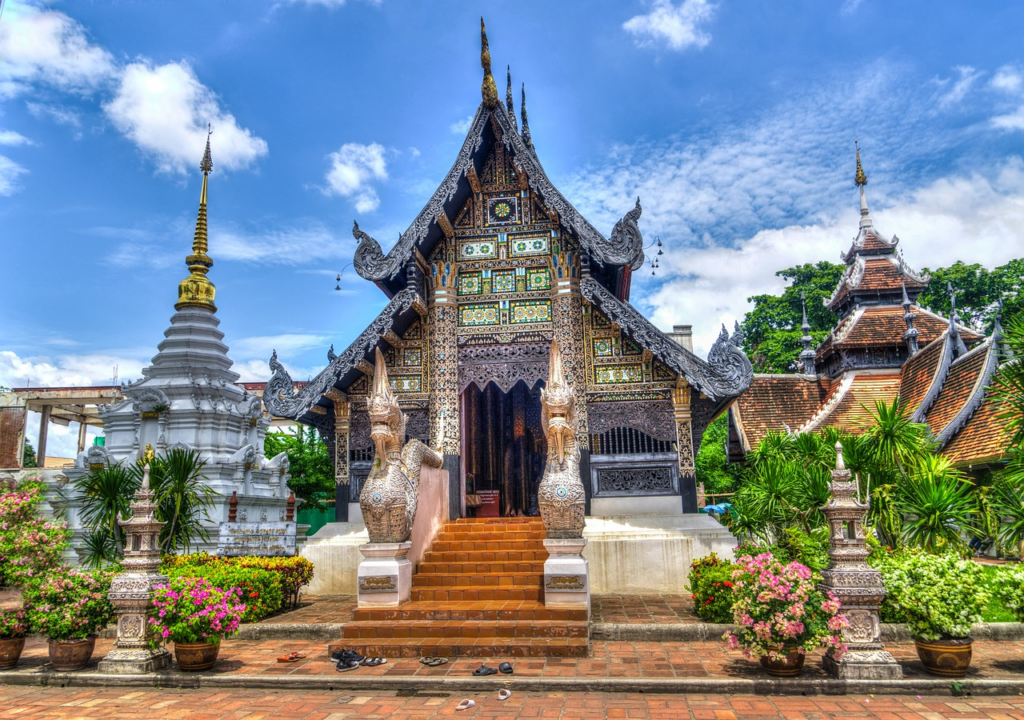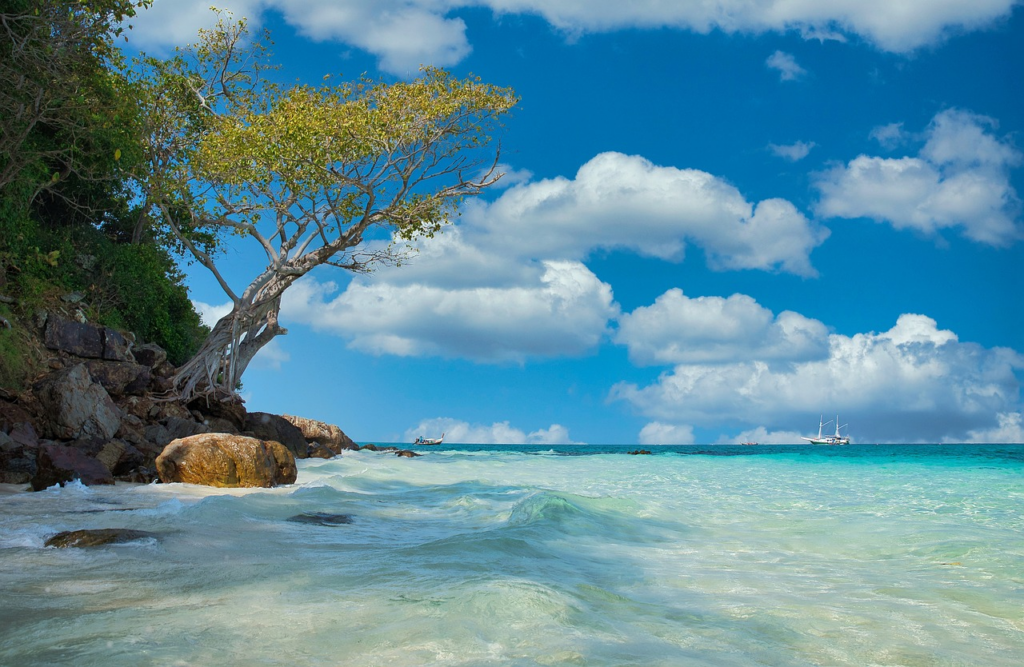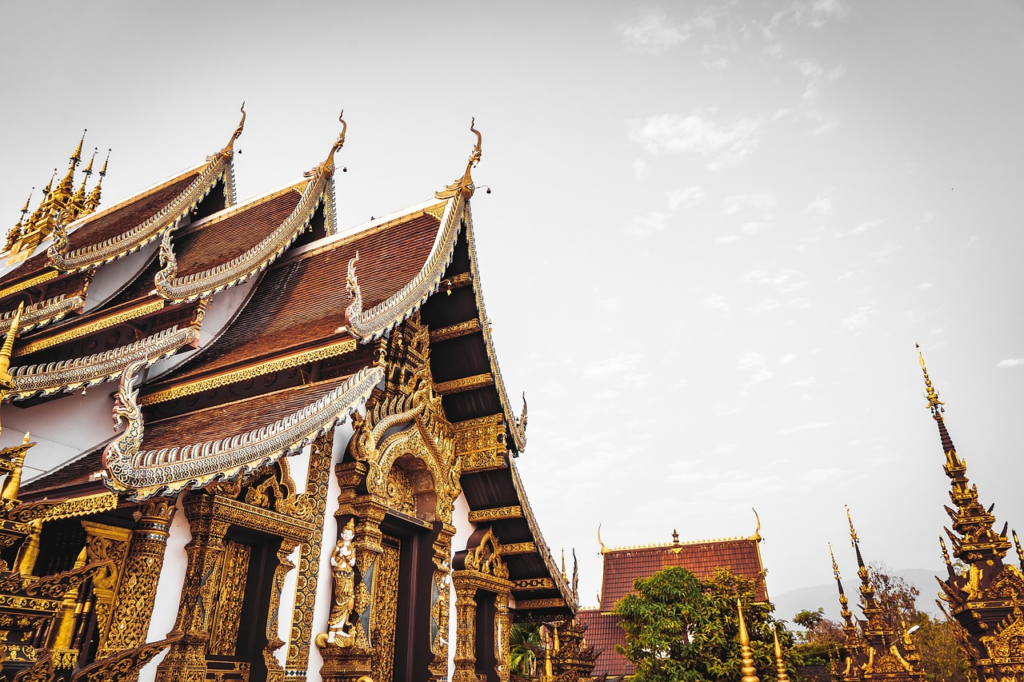If there's one destination that encapsulates the essence of exoticism, beauty and cultural diversity, it's Thailand. With its white sandy beaches, magnificent temples and gastronomy that makes your taste buds dance, this Southeast Asian country is a true paradise for travelers.
When is the best time to travel to Thailand?
Deciding on the best time to travel to Thailand is a question many travelers face when planning their journey to this fascinating Southeast Asian destination. With its paradisiacal beaches, stunning temples, exotic wildlife and rich culture, Thailand offers a unique experience at any time of year. However, understanding the nuances of the climate and the distinct characteristics of each season can be crucial to ensuring a memorable and satisfying trip.
Thailand's geography and diverse climate
Before determining the best time to visit Thailand, it is essential to understand its geography and diverse climate. Thailand has three distinct seasons: the dry season, the rainy season and the cool season. However, due to its vast expanse and different climatic zones, the ideal season can vary depending on the region you intend to visit.
From November to February
The dry season, which runs from November to February, is widely considered the best time to visit most of Thailand. During this period, the weather is milder and more pleasant, with sunny days and moderate temperatures, making it ideal for exploring beaches, temples and other tourist attractions. In addition, the waters are calmer and clearer, perfect for activities such as diving and snorkeling.

From May to October
The rainy season, which runs from May to October, is characterized by frequent rains and high humidity. Although this time may not be preferred by many travelers due to the unstable weather, there are advantages to visiting Thailand during the rainy season. For example, the landscapes are lush green, the crowds are smaller and the prices for accommodation and tours tend to be lower. However, it is important to be prepared for sudden downpours and possible interruptions to outdoor activities.
From March to April
The cool season, which takes place from March to April, marks the transition between the dry season and the rainy season. During this period, temperatures can be quite high and the humidity can be uncomfortable, especially in urban areas like Bangkok. However, this is a good time to visit the north of Thailand, where the climate tends to be milder.
What can't I miss in Thailand?
Exploring Thailand is like entering a world of exotic wonders, filled with stunning temples, breathtaking beaches, delicious cuisine and a rich, vibrant culture. With so many tempting options, it can be hard to decide what not to miss. However, here are some must-see experiences when visiting this fascinating Southeast Asian country:
Temples and palaces
Thailand is a country deeply rooted in faith and spirituality, and its temples and palaces reflect this rich cultural heritage. When traveling around the country, it is impossible to ignore the majesty of the temples and the grandeur of the palaces, which are testimony to the architectural skill and religious devotion of the Thai people.
Temples (Wat)
Temples, or "wats" in Thai, are sacred places of worship and contemplation. Each temple is a unique architectural masterpiece, with elaborate details and stunning decorations. Among the most famous are Wat Pho in Bangkok, known for its colossal Reclining Buddha covered in gold, and Wat Arun, with its towers decorated with colored porcelain that shines under the sun.
In addition to their visual beauty, Thai temples are centers of spiritual practice and culture. Many monks reside in these temples and perform daily religious ceremonies, offering visitors the opportunity to experience the unique spirituality and rituals of Thai Buddhism up close.
Royal Palaces
The royal palaces bear witness to Thailand's rich history and monarchical tradition. The best known is the Grand Palace in Bangkok, which served as the official residence of Thai kings for centuries. With its adorned roofs, ornate towers and lush courtyards, the Grand Palace is an architectural marvel that reflects the grandeur and splendor of the Thai monarchy.
In addition to the Grand Palace, there are other royal palaces throughout the country, each with its own history and cultural importance. These palaces not only offer an insight into Thai royal life, but also house historical treasures, including royal artifacts and sacred relics.
Exploring Thailand's temples and palaces is a fascinating journey through the country's spirituality, history and culture. Each visit offers a unique opportunity to immerse yourself in Thailand's rich heritage and witness the beauty and grandeur that make this country so unique and captivating.
Nature and beaches
Thailand is blessed with stunning biodiversity and a variety of natural landscapes that make it a dream destination for nature lovers and paradise beach seekers. From untouched islands to lush jungles, the country offers a wide range of experiences for those wishing to connect with the natural world.
Islands and beaches
Thailand's islands are true tropical paradises, with white sandy beaches, crystal clear waters and impressive rock formations. The Phi Phi Islands in Krabi are perhaps the most famous, known for their stunning views, great diving opportunities and vibrant atmosphere. Railay Beach, also in Krabi, is another highlight, offering visitors the chance to climb limestone cliffs and relax on secluded beaches.
In addition to the best-known islands, Thailand is home to a multitude of stunning beaches along its long coastline. From busy beaches like Patong in Phuket to tranquil hideaways like Koh Lanta, there's a beach for every taste and preference.
National Parks and Nature Reserves
As well as breathtaking beaches, Thailand is also home to an impressive array of national parks and nature reserves. Khao Sok National Park, for example, is one of the country's natural gems, with its dense rainforests, tranquil lakes and rich wildlife, including elephants, tigers and monkeys.
Another unmissable destination is Doi Inthanon National Park in the north of the country, home to Thailand's highest peak and a variety of unique ecosystems, including cloud forests and fields of alpine flowers.
Outdoor Adventure
For the more adventurous traveler, Thailand offers a range of exciting outdoor activities. From trekking through the jungle to canoeing in sea caves, there is something for all levels of skill and interest.
In addition, Thailand is one of the world's top diving destinations, with a plethora of spectacular dive sites, including the coral reefs of Koh Tao and the wrecks of Koh Phi Phi.
Culture and Tradition
Thailand is a country rich in culture and tradition, where ancient customs blend harmoniously with modernity. Traveling around the country, visitors are immersed in a vibrant tapestry of festivals, art, cuisine and rituals that reflect the unique soul of the Thai nation.
Festivals and celebrations
Festivals play a significant role in Thai culture, offering visitors a fascinating insight into the country's tradition and spirituality. One of the best-known festivals is Songkran, the Thai New Year, celebrated in April with three days of festivities including water, music and food.
During Yi Peng in Chiang Mai, thousands of paper lanterns are released into the sky, creating a dazzling light show and symbolizing the release of bad luck and misfortune.
Arts and Architecture
Art and architecture play a key role in the expression of Thai culture, with richly decorated temples, intricate carvings and exuberant paintings that tell stories of faith and tradition. The architecture of Thai temples is truly impressive, with golden pagoda-shaped roofs, ornate towers and intricate carvings in wood and stone.
In addition to religious architecture, Thailand is also known for its traditional arts, such as silk painting, wood carving and ceramics. Visitors can explore street markets and art galleries to discover works by local masters and learn about traditional techniques that have been passed down from generation to generation.
Thai cuisine
Thai cuisine is one of the most famous in the world, known for its explosion of flavors and fresh, aromatic ingredients. Each region of Thailand has its own distinct cuisine, with dishes ranging from coconut curry in the south to spicy soups in the north. Learning to cook Thai dishes is an unmissable cultural experience, and many cooking schools offer hands-on classes where visitors can learn from local chefs and then enjoy their creations.
Traditional Life
Although Thailand is a country in constant development, many ancient traditions are still preserved in rural communities and remote areas. For example, the hill villages in the north of the country maintain ancient traditions of weaving, farming and ceremonial rituals that offer visitors an authentic insight into traditional Thai life.
Exploring Thailand's culture and tradition is a fascinating journey that reveals the depths of national identity and the Thai people's pride in their historical and cultural roots. It is an opportunity to marvel at the beauty, diversity and spiritual richness of a country that continues to enchant and inspire visitors from all over the world.
Wildlife
Thailand is an incredibly diverse country in terms of wildlife, offering visitors the opportunity to marvel at an impressive variety of animal species in their natural habitats. From dense rainforests to vibrant coral reefs, Thailand is truly a paradise for nature lovers and wildlife enthusiasts.
Elephants
Elephants are perhaps Thailand's most iconic animals and have played an important role in the country's culture and history. Although many elephants are still used for work in some rural areas, there is a growing movement to conserve and protect elephants in Thailand. Sanctuaries and rehabilitation centers offer visitors the opportunity to interact closely with these majestic animals, learn about their ecology and behavior, and support conservation efforts.
Tigers
Another symbol of Thai wildlife is the tiger, although its population in the wild is increasingly threatened by habitat loss and poaching. However, there are tiger sanctuaries all over the country working to protect and rehabilitate these magnificent animals. Visitors can have the unique chance to see these big cats up close, observe them in their natural environment and learn about ongoing conservation efforts.
Marine Life
With its warm tropical waters and vibrant coral reefs, Thailand is one of the world's top diving destinations. Divers and snorkelers have the opportunity to explore an incredible diversity of marine life, including colorful tropical fish, sea turtles, sharks, rays and a myriad of fascinating sea creatures. Places like the Similan Islands, Koh Tao and Koh Phi Phi are known for their crystal clear waters and pristine coral reefs, offering truly unforgettable diving experiences.

Birdwatching and Nature Reserves
For birdwatching enthusiasts, Thailand is an unmissable destination, with a wide variety of habitats and a rich diversity of birds. Nature reserves such as Khao Yai National Park and Doi Inthanon National Park are excellent places to spot a variety of species, including hornbills, pittas, kingfishers and a host of migratory birds.
These are just a few of the countless incredible experiences that Thailand has to offer. Whatever your interest, this enchanting country never fails to surprise and captivate its visitors.
See also: How long does a round-the-world cruise take? See the duration
April 1st, 2024

She has a degree in Literature - Portuguese/English, and is the creator of the Escritora de Sucesso website. As a writer, she seeks to expand everyone's knowledge with relevant information on various subjects. At Trend-Topics, she brings news and content ranging from entertainment to the country's economic situation.






